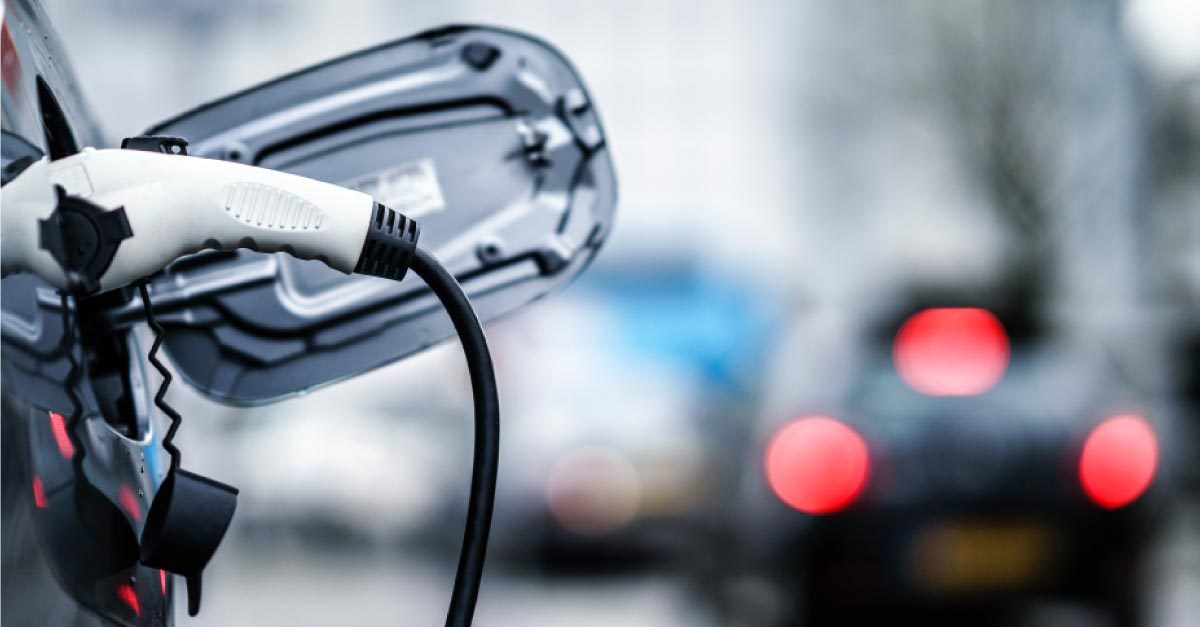Investments in and commits to electric vehicles (EVs) are at all-time highs. In March 2022, EV sales reported a 60% increase from March 2021 (one of the largest jumps in EV history). Electric vehicle proliferation isn’t slowing. In fact, with the Biden administration working to make 50% of all new vehicles sold in 2030 zero-emissions vehicles and the global market looking to increase that number to 75% by 2040, EV production will accelerate.
Electric vehicles are a crucial component of an electric future (other industries are exploring all-electric options, too). But, how sustainable is the EV supply chain?
To evaluate the supply chain for new sales of passenger EVs in the United States and globally, The Martec Group conducted research to explore the materials needed for achieving the Biden administration’s 2030 target and the global 2040 target. Findings show there are complex supply chain challenges to address.
Martec Group experts, Keith Miller and John Lorinskas, address three key aspects to review when assessing ESG (environmental, social, governance) goals within the complex and rapidly evolving EV supply chain.
EV demand is straining the supply chain
The combination of increased EV demand and the impact of COVID-19 on supply chains has created significant material bottlenecks. Currently, there’s a global race against the clock to mine enough lithium, nickel, and cobalt to keep up with sales.
What does speed have to do with ESG goals? “It’s three-fold,” explains Lorinskas.
1. When companies are racing to meet demand, there isn’t a lot of time or funding for greener technology. “If companies need batteries, they’re not going to wait for more sustainable options to develop,” says Lorinskas. “They’re going to use existing sources.
“More than 10 battery chemistries exist today across the globe with a high mix of mineral variations. Currently, lithium nickel cobalt manganese oxide (NMC), lithium nickel cobalt aluminum oxide (NCA), and lithium iron phosphate (LFP) have achieved mass-market scale. However, some battery chemistries are still in a research and development (or pilot) stage, like solid state lithium, sodium ion, and zinc ion. These may eventually capture more of the market.”
2. Large gaps exist between current U.S. production and future needs. Of the critical materials needed for EV batteries, the U.S. only has secure production of one: copper.
Currently, China dominates the global market for processing (smelting) with about 60% share of lithium, 67% of cobalt, and more than 80% of both copper and rare earth elements. Further, Chinese companies have already begun actively investing in key mineral mining projects globally.
“This finding from our research is noteworthy,” says Miller, “because the timeline for getting a mining project from exploration to commercial production can range from five to 20+ years with an average of seven to 13 years.
“Down the line, local [domestic] investment will pay off and lead to ROI [return on investment], but there are significant challenges mining companies must consider before making an investment. U.S. mining regulations create longer timelines. Other countries including China, Australia, Chile, and Canada have more expedited processes.”
3. Lithium mining in particular is a difficult undertaking because it’s difficult to establish metal quality until it’s out of the ground. “There are some experimental mining techniques [like clay mining] that can help,” notes Lorinskas, “but they’re newer and even less reliable when you’re crunched for time.”
EV battery creation is not carbon neutral
EVs are appealing because of their lower or zero tailpipe emissions. However, some of the processes used to create EV batteries and electric motors are not carbon neutral. This aspect of the overall EV supply chain is often undershowcased and frequently misunderstood.
“If you’re analyzing ESG factors within the EV battery supply chain, mining practices should be included,” Miller notes. “EVs are ESG-positive in use, but not in production.
“For example, the high pressure acid leaching (HPAL) process that is being used increasingly to create battery-grade nickel is energy intensive, generates significant amounts of CO2 emissions, and produces waste tailings that can remain acidic for decades. In the U.S., we don’t use HPAL; but when most EV battery materials aren’t coming from the U.S., our EPA guidelines can’t combat HPAL use.”
“The good news, however,” Lorinskas explains, “is that there’s interest in more domestic production. Lithium mining isn’t a perfectly green solution, but if we can get more automotive manufacturers sourcing from local mines that are held to U.S. EPA standards, we can start to make a difference.”
EV battery disposal and replacement are complicated
Battery disposal of any kind has always been a hot, controversial topic – and EV batteries are not exempt. In addition to the environmental issues inherent in their creation, EV batteries are notoriously difficult to dispose of. Additionally, replacing them is currently a relatively wasteful process.
“Right now, the average EV battery life is about eight to 12 years,” explains Lorinskas. “Lithium EV batteries already are difficult to dispose of or recycle because they can explode. It doesn’t help that because of how most EVs are engineered, if even the smallest component malfunctions, the entire battery has to be replaced and you end up with more batteries needing disposal under unreliable systems.”
Recycling will play a critical role in future EV battery production, but it will take a considerable amount of time (10+ years) to build capacity. “The automotive industry is focusing on recycling to reduce the long-term impact of raw material shortages and cost increases,” says Miller.
“More battery recycling,” continues Miller, “will help to keep hazardous materials from entering the waste stream, both at the end of a battery’s useful life and during its production. The material recovery from recycling also can reintroduce critical materials back into the supply chain.
“Other key investments will be around increased battery efficiencies, including accelerating solid state battery technology and modularity. With better modularity, we could simply replace parts of the battery without throwing away the entire unit,” Miller suggests.
A deeper understanding of the electric future is needed
So, is the EV battery supply chain sustainable?
Short answer: It could be better. As a frame of reference, one Tesla Model Y/3 with a 75kWh battery is equivalent to roughly 6,000 cell phone batteries. The material demand for the entire mobile electronics industry today (1.5 billion cell phones, 164 million tablets, 277 million laptops) is equivalent to about 575,000 Tesla Model Y/3 vehicles. (In 2020, Tesla sold approximately 500,000 vehicles.)
Electric vehicle advancements are changing by the day as we move toward more sustainable solutions. To ensure a sustainable and environmentally responsible industrial base to meet the requirements of the clean energy economy, supply chain challenges must be addressed. If more domestic/local mining is key, then perhaps the Copper Mark can serve as a framework for the responsible production of other critical EV battery materials.
>>Download our EV battery supply chain assessment summary.
Keith Miller is a director with The Martec Group. He has more than 25 years’ experience in industrial market research specializing in automotive and transportation analysis, market analysis, and competitive benchmarking.
John Lorinskas is a project manager with The Martec Group. He has been with Martec for seven years and specializes in materials market research, technology assessments, ethnography studies, and competitive benchmarking.
Please contact us for your automotive market research needs. We’re happy to discuss industry trends and the automotive landscape on a deeper level.





